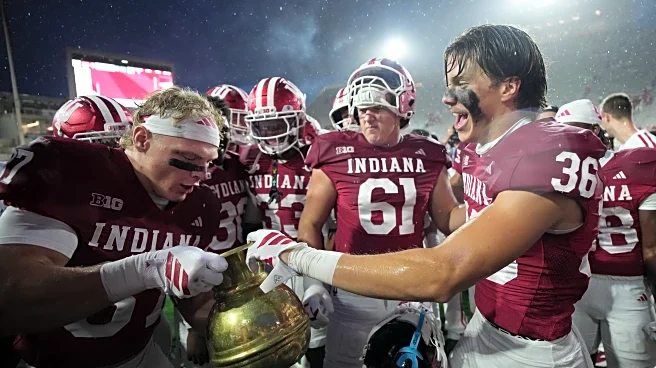What's Happening?
Procter & Gamble (P&G), based in Cincinnati, Ohio, has reported a 2 percent organic revenue growth for the fiscal first quarter ending September 30, surpassing analyst expectations. This growth was primarily
driven by increased volume and sales in the company's beauty and grooming categories, which offset weaker performances in other areas such as baby, feminine, and family care. The company's strategy of marketing its products as premium and superior to competitors appears to be effective, as evidenced by the strong sales figures. P&G's shares rose by about 2 percent in premarket trading, despite a 9.2 percent decline in stock value this year compared to the S&P 500 Index's nearly 15 percent gain.
Why It's Important?
The strong performance in P&G's beauty and grooming sectors highlights consumer resilience and the effectiveness of the company's premium pricing strategy. This growth is significant as it suggests that consumers are willing to pay more for perceived quality, even amidst economic pressures. The company's ability to maintain its fiscal outlook while reducing the expected impact of tariffs and commodity prices further underscores its strategic adaptability. However, P&G's decision to cut 15 percent of its corporate workforce and review its brand portfolio indicates ongoing efforts to improve efficiency and respond to market challenges. These actions could have broader implications for the consumer goods industry, influencing competitive strategies and employment trends.
What's Next?
P&G plans to implement a 15 percent reduction in its non-manufacturing workforce over the next two years as part of a restructuring program aimed at improving efficiency. The company is also considering divesting brands or reducing assortments. Additionally, P&G is bringing on a new chief executive officer, which may lead to further strategic shifts. As the company navigates these changes, stakeholders will be watching closely to see how these decisions impact its market position and financial performance. The broader consumer goods industry may also be affected, as competitors may adjust their strategies in response to P&G's moves.
Beyond the Headlines
The restructuring efforts at P&G, including workforce reductions and potential brand divestitures, raise questions about the ethical implications of corporate efficiency measures. While these actions may improve financial performance, they also affect employee livelihoods and market diversity. The company's focus on premium pricing and perceived product superiority could influence consumer expectations and industry standards, potentially leading to shifts in marketing strategies across the sector.













